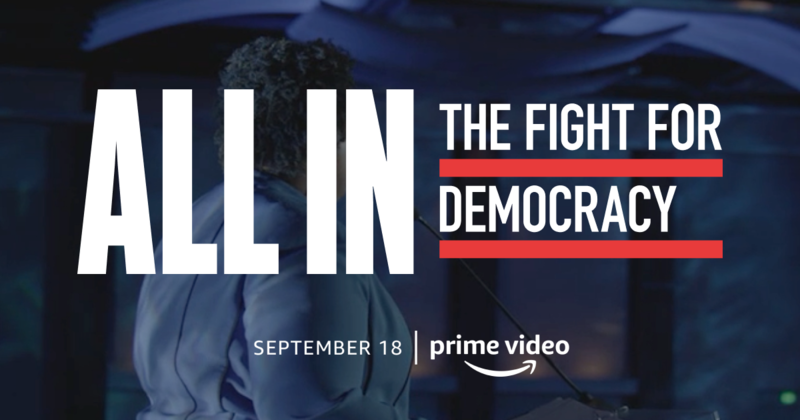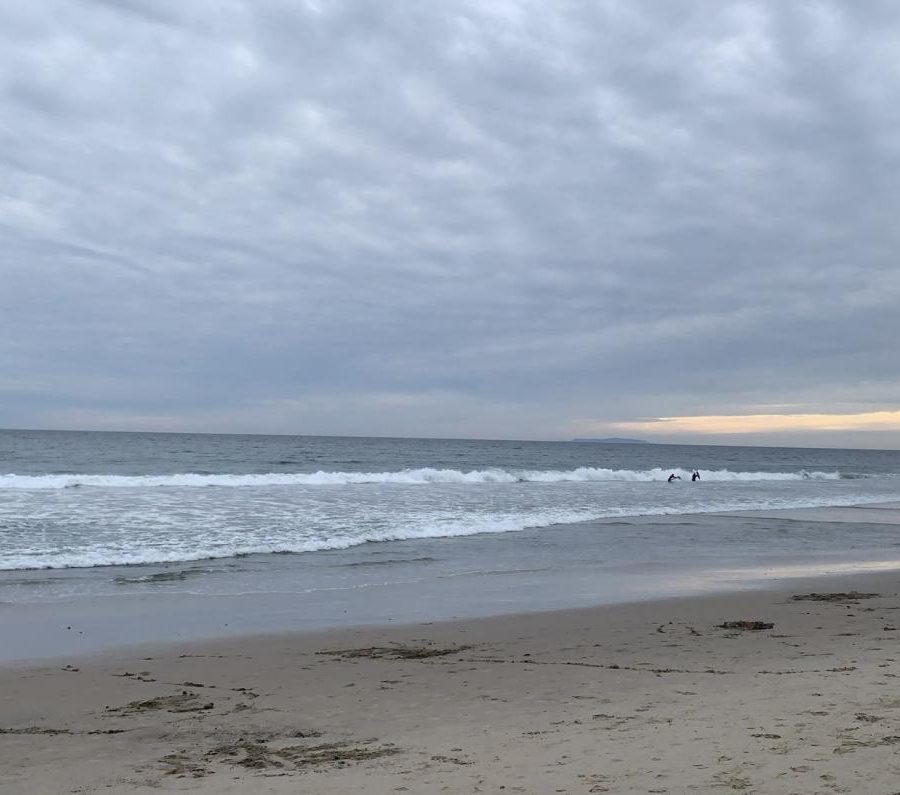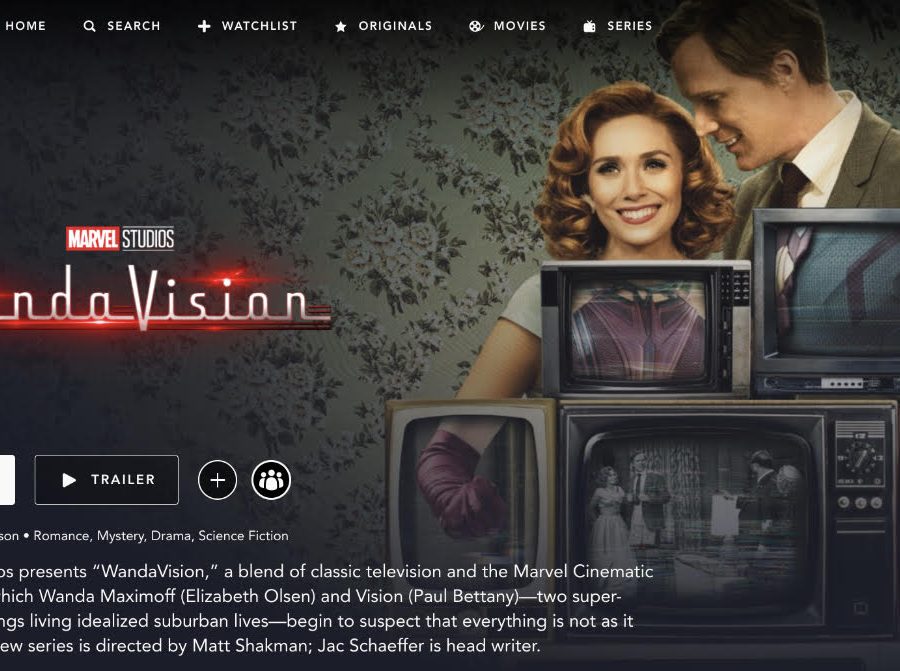Racism and voter suppression tactics are far from gone. With the recent rise in social justice protests and the 2020 election already underway, “All In: The Fight for Democracy” is a timely film.
The documentary came out just last month and covers the history of voter suppression in the United States and how it’s still prevalent, just in different forms than it once was. It follows Stacey Abrams running for governor in 2018, she would have been the first Black female governor if she had won- or perhaps if there hadn’t been voter suppression tactics in place across Georgia.
“[“All In”] could have easily been a justifiably angry look at what happened in 2018. Instead, the film introduces several scholars, lawyers and other experts to trace the right to vote back to the Founding Fathers,” said Odie Henderson in a review.
Until the passing of the 15th amendment in 1869, only white male landowners could vote- only about 20% of the population. It was only in 1920, 100 years ago, that women got the right to vote, and for years many African Americans still couldn’t or didn’t feel safe voting due to Jim Crow laws and the Ku Klux Klan.
While things have greatly improved since then racism and voter suppression is still a problem, even if it’s taking a more hidden form. Sometimes though, it’s blatant, like one decision was in Alabama seven years ago.
In 2013 Alabama overturned the Voting Rights Act of 1965, which had banned racially discriminatory voting practices. After this, states across the country began implementing new voter suppression laws which specifically targeted “communities seen as non-normative”, as Stacey Abrams said.
In North Dakota, in 2015 a voter ID law was passed which required a residential address on driver licenses. Getting a residential address on a reservation required that the local or state government grant it- they didn’t. Almost one-quarter of native Americans couldn’t vote due to this law. Two-thirds of those without ID did not even have the necessary documents to get one. Similarly in Wisconsin, there was a voter ID law requiring photo ID. 23,000 voters were affected.
Voter roll purges are also a problem. In Ohio, you’re dropped if you don’t vote in six elevations and don’t respond to a single postcard sent, and you aren’t even notified that you’ve been purged. Thousands of people purged have voted recently, 20% were purged on an error.
Even if you can vote there are still hoops to jump through. Just finding a polling place could be difficult, with poll closures hitting counties of minorities the worst. Assuming a polling place is found it can be hours in line due to understaffing or a lack of polling places. After the wait people may find they don’t even have the necessary ID or documents their state requires.
“Jim Crow 2.0. That’s what we’re seeing. When you look at Georgia in 2018, it is the rise of Jim Crow again,” said professor of African American Studies at Emory University Carol Anderson.
In 2018, over 53,000 Georgia residents had their voter registration put on hold because of a policy that requires their applications to precisely match information from state agencies. This includes signatures reportedly not matching the signature that was on file, which is especially a problem for people whose first language isn’t English. Georgia’s population is about 32% Black but the list of voter registration on hold was nearly 70% Black.
While these rules are put in place supposedly to stop voter fraud, there’s no evidence this is effective or that voter fraud is even a large problem. After losing the popular vote in 2016 Donald Trump claimed he actually won it and three million people voted illegally. There is nothing to back this up. In fact, the Voter Fraud Commission formed by Trump disbanded as it found no evidence of widespread voter fraud. A study from 2000 to 2011 found that out of 146 million total voters there were 2068 alleged voter fraud cases and only 10 cases of voter impersonation. There is also no proof mail-in-ballots result in rampant voter fraud.
“So, then you ask yourself, why do we have this architecture of all of these obstacles? Voter ID, gerrymandering, purging, poll closures. Why do we have all of this if voter fraud is virtually nonexistent?” Anderson said, “When you ask that question that way, then it leads you down a path where America must look at itself again the way that it looked at itself when it saw the cataclysm on the Edmund Pettus Bridge.”
In the 2018 election Stacey Abrams was running in, she went to vote early to show it’s importance.
“I hand my [voting] information over and the young woman, with great trepidation, tells me that I cannot vote because I’ve applied for an absentee ballot. And I lean in quietly and I say ‘No I didn’t.’ I voted in the state of Georgia since 1992. I’ve never applied for an absentee ballot,” Abrams said, “She desperately wanted to be helpful, but something had happened and she did not have good information. Her manager came over, we talked, and we were able to figure out what needed to be done. What worries me are the thousands of people in Georgia who tried to vote that didn’t have CNN and MSNBC standing over their shoulders who were told no and believed that no was the answer…”
The documentary ended on a powerful note: according to the Electoral integrity project, the U.S. ranked last among Western democracies.
So far this year we are seeing these problems repeating. The Georgia primary had widespread problems from malfunctioning machines to 8-hour-long lines, especially in communities of color. In July, the Supreme Court sided with a Circuit Court of Appeals ruling that would allow the state to make past-criminals pay a fine to vote.
It may be easy to pretend these are other states’ problems, but California is having its own share of issues. The California Republican Party has admitted to placing over 50 fake ballot drop boxes around the state. Official California drop boxes can be found on the state’s election website. What real drop boxes look like can be found here and a photo of a fake one here.
While “All In: The Fight for Democracy” has 100% on Rotten Tomatoes the audiencereviews are at about an average of three stars. These reviews are flooded with racist negativity. While negative movie reviews are normal and something every film receives, most one-star reviews this film has so far received seem baseless and sometimes blatantly racist.
Multiple call it “liberal lies” or “fake news”, despite it simply covering a long series of events and actions which are just objectively things that have happened. The commentary given should not be controversial: people should be able to vote, people should be treated equally, and in their attempt to disprove the idea of any inequality these reviewers prove just that.
“Bunch of animals acting like victims,” said Google user Dan Wagner.
The reviews on google, as of writing, are currently all five stars or one star, with no one-star review holding any real claim, and IMDb shows a similar pattern.
Some reviews criticize the movie for not mentioning that the Ku Klux Klan was started by democrats- they probably didn’t mention that because it’s not true. Even if it was an accurate claim, party values change over time. To view a party as what it was 200 years ago would be ridiculous, like how some people wave the confederate flag proudly despite it being a symbol of slavery and bigotry. Other reviews simply lie about the movie as a whole or about the people in it.
“These are essentially radical Marxists with a very strong narration of lies. They could care less about the Constitution of the United States, freedom, liberty, free speech or religious freedom. These people simply want to take away all your freedoms and turn you into a homeless pawn.” one review said.
One reviewer on Rotten Tomatoes summarized the situation well.
“In essence, they’re trying to vote to suppress this documentary on voter suppression. Stick it to them and gain knowledge by watching this movie. Knowledge is power”Rotten Tomatoes user Derrick C said.
Check if you or your parents are registered to vote and get information on polls near you at AllInTheFilm.com and find a dropbox near you here.
All In: The Fight for Democracy
Oct 22, 2020
Donate to The Lancer
$0
$500
Contributed
Our Goal
Your donation will support the student journalists of Thousand Oaks High School. Your contribution will allow us to purchase equipment and cover our annual website hosting costs.
More to Discover






